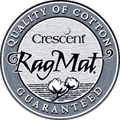Works on Paper are the most vulnerable to the environment --
therefore require diligent attention when framing.
-
Water-colours
-
Etchings & Prints
-
Photographs
-
Pastel
-
Pen and ink work, and drawings
-
Documents

We frame to conservation grade as a minimum, this wards off the unsightly deterioration 0f paper; namely acid burn & foxing.
As part of the conservation framing package, we suggest protecting your art from irreversible UV damage with one of the glazing options from ARTGLASS,
Frame & Frame sealer
99% UV Filtering Glass
Conservation Matboard
100% Cotton Backing
Backing board
FRAMING WORKS ON PAPER 101
A. The Priorities
The most important element is the products that come in direct contact with the artwork (referred to by framing professionals as the 'package' or 'sandwich)
Archival or conservation framing means that the materials used are archival quality. This includes the paper surrounding the artwork plus the method of affixing the work to these materials, and any backing of materials that comes in contact with the materials, and UV blocking glazing. Make sure that the mounting methods are 100% reversible.
The frame itself should visually enhance the work, of course, and it helps hold the archival package of materials, including U.V. glazing together in an airtight package. Although the frame itself is important the artwork itself should never touch the frame or the glazing. The style of the frame, including whether it is wood or metal is one of personal decorating choice. For conservation purposes it is better to have archival conservation mounting with a cheap frame than skimp on the mounting.
B. Key Archival Framing Facts to know:
Hinging
Acid free and water activated materials only. Absolutely spirit based adhesives should
be used, as they will eventually harm the paper. No glue or paste. Do not cut or fold the
artwork. Museum grade corners (Dahle) may also be used.
Matboard and Backing
Acid free, lignin free, archival mats must be used in framing fine art for preservation. Matting separates the artwork from the glazing and provides room within the frame for the paper to expand and contract, which it will do with even slight variations of heat and moisture. Museum quality mats are available in many colours to suit all décor and images. The work may be floated on the mat or framed by it, that is a matter of personal choice that does not bear on conservation. Also any backing behind the mat, such as foamboard and brown paper, needs to all be archival, too.
Glazing
One of the greatest problems for artwork on archival paper is fading. There are two keys to avoiding this. First, do not place or hang any two dimensional art, including oils and acrylics on canvas or board) in direct sunlight, or with light, especially fluorescent, directly focused upon it. Second, use only U.V. filtered glazing, either glass or acrylic. Although this won't eliminate all outside light and heat, it will filter out about 98% of harmful ultraviolet light. Always hang art in cool dry rooms, never in a kitchen or bathroom.
C. Artwork that is already framed
If you have purchased artwork that is already framed, it is important to know what quality level the framing was done to. 'Budjet Framing' may still look good for 5 years, but it can cause lasting harm to artwork that might then costs hundreds to be restored.
If possible contact the person or shop where it was originally framed to inquire about the methods of framing. Do not simply ask if the work was conservation framed, but ask about the specific materials that were used.
You can call upon my services: I am quite happy to visually check the quality of the materials used.
D. Protecting Provenance and Certification
Fine art prints, drawings, photographs and other works often have Certificates of Authenticity or
provenance records that accompany them. Often framers attach these to the backs of a frame, a
practice that usually does not occur with archival custom framing, although some notation as to
the artist might be made if the work is unsigned. The back of a frame does not adequately care for
these important documents.
Store any provenance records or certificates of authenticity, sales receipts, framing receipts (have the materials used noted on the receipt), etc. in a safe place, but not on the back of the frame.
For insurance purposes it is wise to store all important documents in a safe deposit box or safe off of the premises. Also, it is recommended that a photograph be made of the work and even the framed work if the image does not appear in any of the materials that you have.
E. Storage Only: Recommendations
The best way to store a work is in a special archival box, separated from other works with archival materials such as 100% cotton board. The box needs to be stored in a cool dry place.

Picture Framing Tauranga


